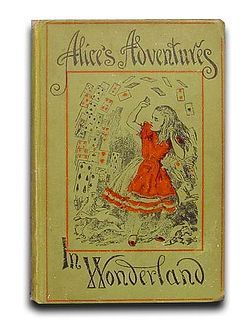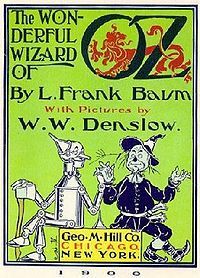Wardrobes, Tornadoes, and Rabbit Holes
We’re told that children nowadays don’t have wide or steady attention spans. And that a novel’s first page should offer up drama, a setting, a sense of the main characters, and a question that will keep us reading. Did authors in the past have more time to coax readers into stories?
Perhaps some did, but yesterday a student in my children’s literature class pointed out that one reason some movies based on classics seem better to him than the books is because some novels for middle readers sprint at the outpost. We just read The Lion, the Witch and the Wardrobe, where he pointed out that the four children are swept from London and their parents to an old house in the country in the first paragraph, and four pages later, Lucy is opening a wardrobe door.

He also mentioned Alice in Wonderland, where Alice goes from reading on a lawn down the rabbit hole in the fourth paragraph.

And the first spoken line in The Wonderful Wizard of Oz is, “There’s a cyclone coming, Em.” Four short pages in, Dorothy and a house are whisked off on the wind. We don’t get time to know these characters and their homes before they leave them.

All of these books have some roots in fairy tales, which are famous for fast action and compressed time. But none really employ the sort of characterization and build up of detail that we’re accustomed to in either more contemporary novels or movies.
Maybe children today are challenged to pay attention, but literature suggests that this could have long been so. Are these swift beginnings good ones? Or is it best to borrow some of the fast pace – as E.B. White does with the first line in Charlotte’s Web – “Where’s Pa going with that ax?” – but goes on to have breakfast table conversation that more leisurely develops the characters, time, and place.





